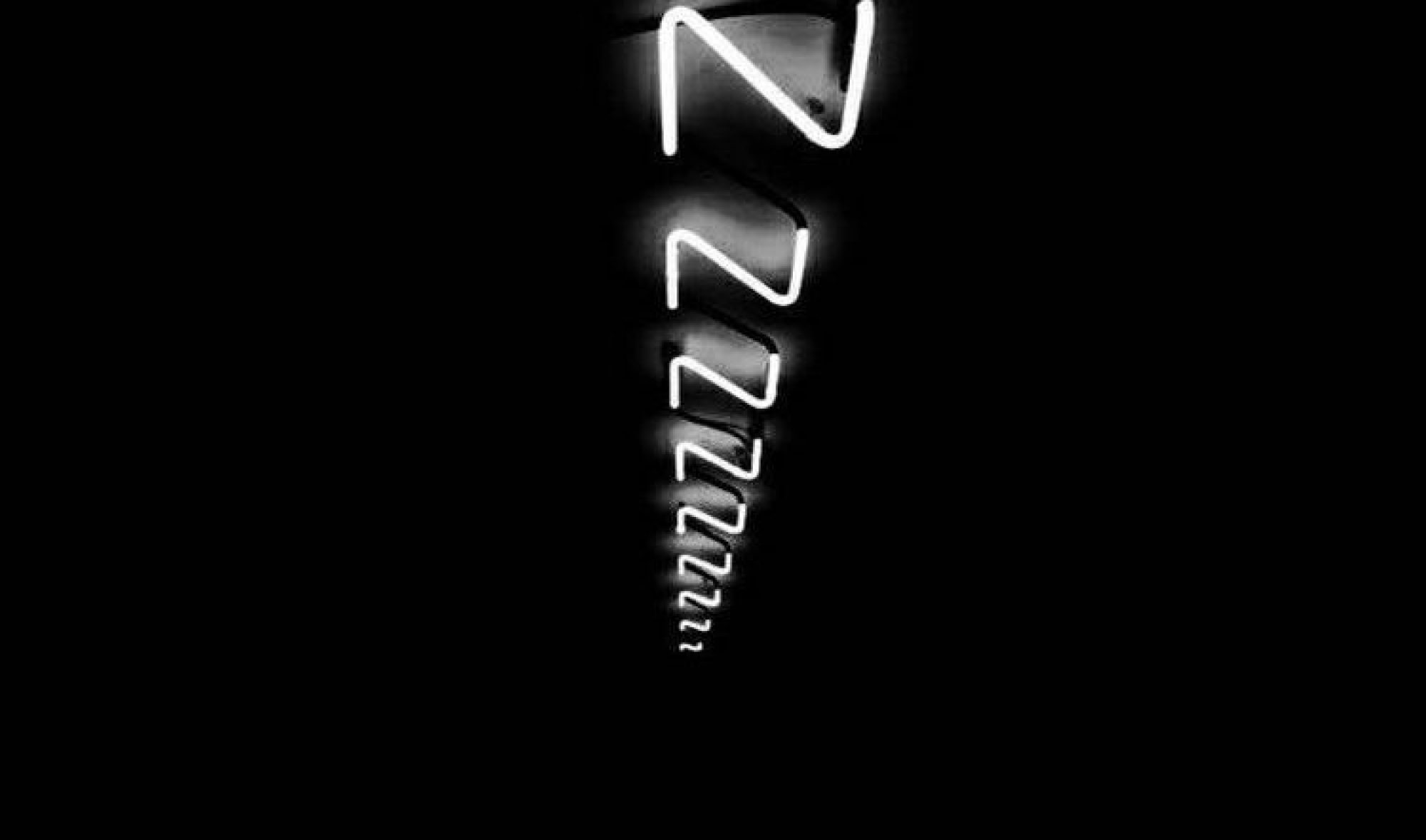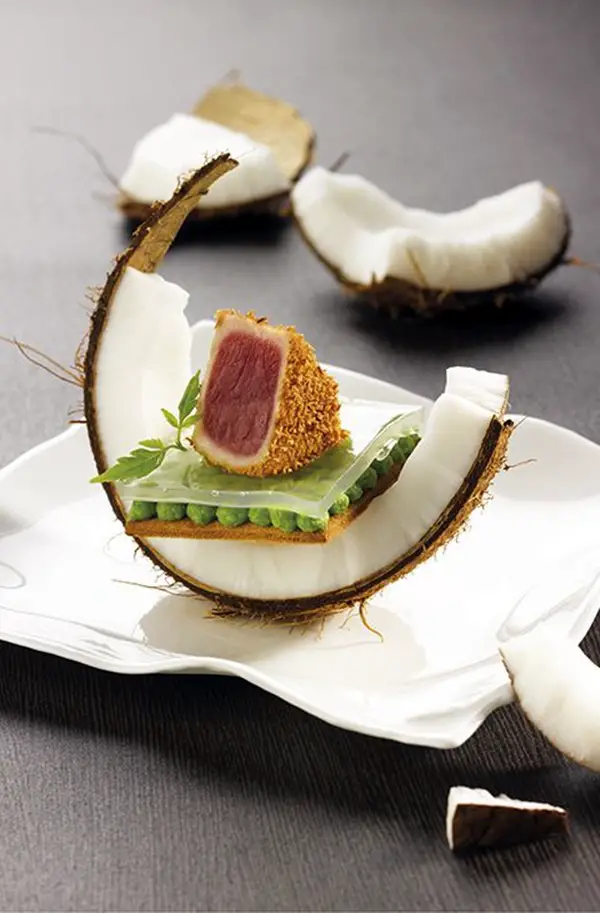This post marks the end of the second foundation 3D project – Gaia’s Ikebana.

This post will be written in the following sequence:
| Pointer 1 | Brief Overview of the Project:
|
| Pointer 2 | Introduction to Ikebana:
|
| Pointer 3 | Research on Summer:
|
| Pointer 4 | Thought-Process:
|
| Pointer 5 | Final Model:
|
Brief Overview of the Project
For this particular project, we are to create a 3D sketch model that composites of curvilinear volumes with the given theme – Ikebana. To twist things up, our final model are to be prepared using ingredients of the chosen season.

Definition of Curvilinear: Contained by or consisting of a curved line or lines.
Besides, we are to create a balance (dependent, independent and precarious) of directional forces from every position. In short, the composition should not look flat from any vantage point.
| Dependent | A situation in which the axis of a volume needs the axis of other volumes for physical visual structure. |
| Independent | A condition in which a volume in a static composition is independently related to the vertical or horizontal axis. |
| Precarious | A situation in which for a spilt second in time, one gets the feeling of balance, as if the volume is supporting itself for the moment. |
Introduction to Ikebana
Ikebana (生け花, ‘arranging flowers’) is the Japanese art of flower arrangement, also known as kadō (華道, the ‘way of flowers’). Ike means ‘alive’ or ‘arrange’ and bana means ‘flower’.
More than just a decorative piece, Ikebana is a spiritual process that helps one develop a closeness with nature and merge the indoors and outdoors.
Types of Ikebana
|
Heika |
Heika is a basic style of ikebana arrangement that uses a tall vase and highlights vertical lines. Emphasis: Bringing out the flowers’ natural charms and arranging them in a tasteful and elegant manner.
Arrangement: Slanting Style Consist of three main elements: (1) Primary stem
(2) Secondary stem
(3) Ornamental stem
|
| Moribana | Moribana uses a shallow container (Utsuwa) and a kenzan, a holder with many sharp points into which flowers are inserted.
Emphasis: Broad expanse of natural-looking shapes and a mound of beautiful flowers.
Arrangement: Upright Style (Exudes a feeling of stability and gravity) (1) Primary stem Length of the primary stem is as long as the diameter and depth of the container combined.
(2) Secondary stem
(3) Ornamental stem
|
Research on Summer
Likewise for this project, we had to worked with a particular theme, or rather season, in relation to Ikebana. With the reappearance of the pandora box, we had to pick out a slip of paper with a given season written on it.
I sighed in despair when the word “Summer” was written on the slip of paper. Reason being, summer is considerably a bright and exciting season in comparison to the other 3 season. Being a monochromatic person, I generally lean towards dark and dull colours. Hence, I went full on with my research and in the below, is a consolidation of my findings.
Falling between Spring and Autumn, Summer is the hottest of the four temperate seasons. Weather in the summer grows warmer, and in some areas, the heat translates to drier temperatures. In this hot and dry time of the year, many deaths are caused by dehydration due to the heat waves.
Colour Palette
In this blazing hot season, most would associate bright shades of primary colour with summer. To give it a twist, I decided to go for a softer and cooler shade of the summer colours.
In the below are some colour palettes that I came across on Pinterest:

Light Blue Grey | Iced Aqua | Pink Ice | Soft Orchid

Antique Teal | Sea-spray | Off White | Harvest Moon |Yellow Ochre
I particularly adore the off white and antique teal colour to which I added into my final model. Apart from it being a summer colour, I feel that it compliments with the Ikebana theme that revolves around minimalism.
Mood
To a certain extent, the season or more specifically, the weather, does affect one’s mood. It is said that a higher temperature can bring a person’s mood up. This is in relation to the fact that summer being the hottest season, has an abundance of sunlight shining through during the season. Sunshine and fresh air are the perfect pick me ups.
Sports Nutritionist and health coach, Branch Mentore mentioned that, “Getting sunshine is one of the easiest and most effective ways to boost your mood. Your skin synthesizes vitamin D, which will boost your immune system and your overall health and sense of well-being.”

Mentioned in the picture above are several moods associated in the summer season. Amongst the different mood, I zoomed into “refreshing” and “tropical” where I tried to incorporate the said mood through the choice colour palette, ingredients and even the placement of elements.
Seasonal Food & Fruits
Being the hottest season of the four, the food in general are usually more heavy in seasoning and taste while the fruits are usually more refreshing, with the juice oozing out the fruit.
Did some research and in the below are a consolidation of the must-have foods and fruits during the summer season.

From the list, I actually used coconuts and blueberries as the ingredients for 2 of the elements. The choice of ingredients will be further explained in the analysis of the final model.
Plating
Plating, or food presentation is important as the way the food looks on the plate is what tempts our eyes and makes you want to taste it.
Certain factors to notice when plating includes:
- Adapt your plate to the occasion
- Balancing variety and contrast
- Matching portion size
In the below are some references of food plating that I’ve found on Pinterest:




Thought-Process
Sketch Model

As seen in the above, the overall composition of the sketch model is pretty simple. I tried to create a balance within the 3 elements where the cylinder (dominant) is independent on its own, with the sphere (sub-dominant) being dependent on the cylinder for support and the cone (subordinate) being precarious where it seems like it’s independent but is in fact supported by the cylinder.

From the side view, it’s much clearer how the 3 elements are supporting each other, creating an overall balance with a slight tension in the composition.

As seen in the above, the cylinder (dominant) is the only visible element from the back view. I knew that I had to make changes but because I was rather satisfied with overall sketch model, I figured that if I created a negative void within the cylinder, it would create a more dynamic composition where the other 2 elements would still be visible from the back view.

Besides, it would look like a life tube, that could be found at the beaches, creating a relationship with the summer season.

Moving on, I started brainstorming on the different ingredients and materials that will fully exemplify the theme. With much research, I came up with this list:
| Dominant | (1) Utensils (Wooden Ladle)
The spoon provides a nice touch to the overall plating where it complements the food and does not seem out of place. This spark me to use a wooden ladle as my 5th element. (2) Coconut husk (Cylindrical)
The void present in the coconut actually provided a nice touch to the dish where it doesn’t take away the focus of the main ingredient. Besides, the main ingredient is being enhanced for the fact that the coconut flesh is white in colour, a large contrast to the bright red colour. |
| Sub-dominant | (1) Branch (with accents of leaves)
(2) Ice-cream Cone (Conical)
|
| Sub-ordinate | (1) Blueberries topped with whipped cream (Spherical)
|
Inspiration & References

The void present in this flower arrangement actually portrays the presence of a void in a subtle manner.
Final Model
Presenting to you my final model which took me a good amount of attempts in trying to bend the branch and countless blisters from using the hot glue gun.

Analysis:

| Dominant |
|
| Sub-dominant |
|
| Subordinate |
|

Starting from the bottom half of the model, you will notice the 3 main elements (sphere, cone and cylinder). The main reason why I chose these 3 ingredients to represent the elements was solely in relation to the concept I came up with:
Summer being the hottest season, has seen many staying indoors to avoid the blazing heat. What better way to combat the heat wave with a cone of refreshing and cooling coconut ice cream topped with blueberries.
Instead of using an entire coconut, I figured that it would be better for me to create a negative void within the coconut. This would also allow the other elements to be visible from various vintage points.

If you take a closer look, you’ll realise that there’s a layer of whipped cream beneath the blueberries. Not only does the whipped cream act as an anchor, keeping the blueberries from rolling around, it is a representation of the cream in the ice cream concept.
Besides, I chose blueberries as it is seasonal fruit in the summer and it provides a citrusy taste, complementing the cool and refreshing taste from the coconut. Not forgetting that blueberries come in bite-sizes, hence it doesn’t take away the focus from the coconut (dominant) even though I placed a handful of it.
Moving onto the cone, I down-played the size of it as I didn’t want it to be the main focus. The main idea of the cone was to complement the blueberries and coconut, providing a nice finishing touch to the model. Also, the wooden ladle and cone are of the same colour scheme, hence it doesn’t take away the focus from the blueberries.

Moving onto the top half of the model, your eyes will drawn to the branches that spirals around the model. The idea behind the spiral effect was to create an illusion, somewhat like a staircase. When descending down the stairs that’s adorn with loose leaves and summer flowers, you’ll be enchanted by the tropical vibes. When descended, you’ll be greeted by a ladle filled with blueberries and so on.
However, the branch itself was a tough nut to crack. It took me a good 2 hours to create the spiral effect with the help of Naomi. However, it took so long only because I was being impatient and I kept on bending the branch by force, which resulted in the many broken branches in the trash bin.
Nevertheless, I am pretty satisfied with the final outcome of the model.
Work-In-Progress
Grocery run
Summer Flowers
using the clamp and saw to cut my coconut (disaster)
coating the coconut with a layer of leaves
assembling the elements together
friends who stayed up and did work together
References
- http://web-japan.org/kidsweb/virtual/ikebana/ikebana02.html
- http://www.chefseanbone.com/why-is-food-presentation-so-important/
- https://www.pinterest.com/search/pins/?q=ikebana%20food%20plating&rs=typed&term_meta[]=ikebana%7Ctyped&term_meta[]=food%7Ctyped&term_meta[]=plating%7Ctyped
















